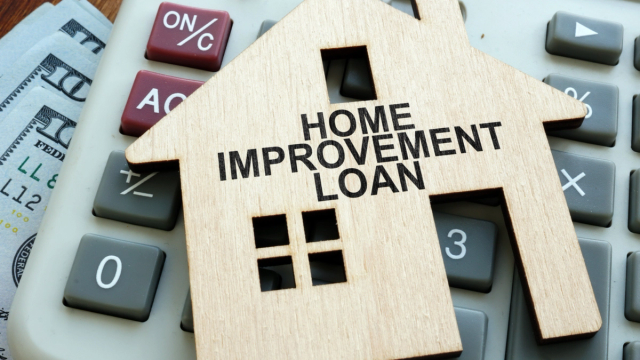Customer Financing: What Is It, and How Does It Benefit My Business?
Leveraged properly, customer financing can be a powerful tool for boosting sales and increasing customer satisfaction

One notable trend has recently exploded in popularity in the consumer payments industry: buy now, pay later. Popular among Millennial and Gen Z consumers, buy now, pay later—or BNPL—is a customer financing solution that allows shoppers to split the total cost of their items over several equal installments, with the first due at checkout.
In December 2020, home services platform HomeAdvisor began offering BNPL to its users through a partnership with Affirm, one of the leading BNPL companies. And while this specific payment option may not make sense for many home services businesses, its introduction to the industry speaks to the growing homeowner demand for consumer financing solutions.
What Is Customer Financing, Anyway?
Customer financing (also called consumer financing) is a service that allows customers to pay for a purchase over time instead of paying the total amount upfront. This often takes the form of store credit cards, installment loans, same-as-cash loans, and—yes—BNPL.
Larger companies (think: car dealerships) have the means and operational resources to offer financing in-house. But if you’re an HVAC or home improvement contractor, you’ll likely need to work with third-party customer financing companies to develop your programs.
With this basic understanding of customer financing, let’s explore a few reasons you may want to offer it.
1. Increase Sales and Convert More Customers
Home services projects are not cheap (nor should they be when we consider the cost of equipment and the value of your team’s labor and expertise).
That said, not every customer has $10,000 laying around for an HVAC system replacement. And among those that do have that kind of liquid cash, there are plenty still who’d prefer to see it go toward other financial goals, like investing. In fact, a recent survey from Modernize found that less than half of homeowners planned to pay for upcoming home improvement projects in cash, while nearly 30% expected to rely on financing or a loan.
It’s common for homeowners to compare quotes from at least two to three contractors. Having a solid financing program in place can make your business more appealing to that 30% that already know they won’t be paying in cash. And contractors working in trades where emergency repairs are common should pay special attention to the fact that most Americans wouldn’t be able to pay a surprise $1,000 bill from their savings. By accepting only cash or credit cards, you could be limiting yourself to a smaller pool of potential customers.
2. Improve Your Customer Experience
Jeff Bezos credits part of Amazon’s astronomical success to the company’s principle of customer obsession. Put simply, customer obsession is about delivering the best customer experience possible by anticipating your customers’ needs. And the growing popularity of self-service, digital, and mobile payments suggests that what customers need most are options and convenience.
For many customers, deciding which payment method is most convenient gives them a greater sense of control—something that can be especially important in an emergency repair situation. Contractors that don’t offer consumer financing unintentionally limit their homeowners, which can not only negatively affect the customer experience—it can result in lost business.
On the other hand, by providing homeowners a project proposal with a range of features and monthly payment options, you empower them to make the best decision for their homes and financial goals. That can go a long way toward building homeowner trust and sparking positive word-of-mouth for your business.
3. Get Paid Right Away, Without Assuming the Risk
Extending credit to customers is always a risk. Even the most thorough credit check can’t give you a complete picture of how responsible a homeowner is with their finances, nor can it predict whether they’ll face future financial troubles that make them more likely to default.
But if you’re partnering with a lender or other financing company, they assume the risk of bad debt, not you. While the lender collects incremental payments from the homeowner over time, you get paid for the job in full, usually once work is completed. This arrangement also means you’re increasing immediate cash flow, making it possible to invest in other areas of your business, like adopting new technology or adding a new technician.
Of course, working with outside customer financing companies is not always without cost. While some companies like ours will have programs that are always free to the contractor, other programs will include dealer fees. Or you may decide you want to pay a portion of your homeowners’ interest to make the proposal more appealing to them. We recommend talking with your financing provider to ensure you understand all the associated costs of going third-party.
The Bottom Line
Regardless of whether you’re looking to boost home improvement sales or grow an HVAC business, financing is a valuable tool for helping you close more jobs, give your homeowners what they need, and improve cash flow for your business.
Working financing into your business can be as simple as saying, “We take cash or card—and I also offer financing if you want to check out some monthly payment options.”
 Financing EssentialsHome Improvement Loan Types: A Simple Overview for HVAC Contractors
Financing EssentialsHome Improvement Loan Types: A Simple Overview for HVAC Contractors Financing EssentialsSecond-Look Financing: How Does It Benefit Your Home Improvement Business?
Financing EssentialsSecond-Look Financing: How Does It Benefit Your Home Improvement Business? Sales StrategyUsing Seasonal Specials to Boost Your HVAC Business Year-Round
Sales StrategyUsing Seasonal Specials to Boost Your HVAC Business Year-Round